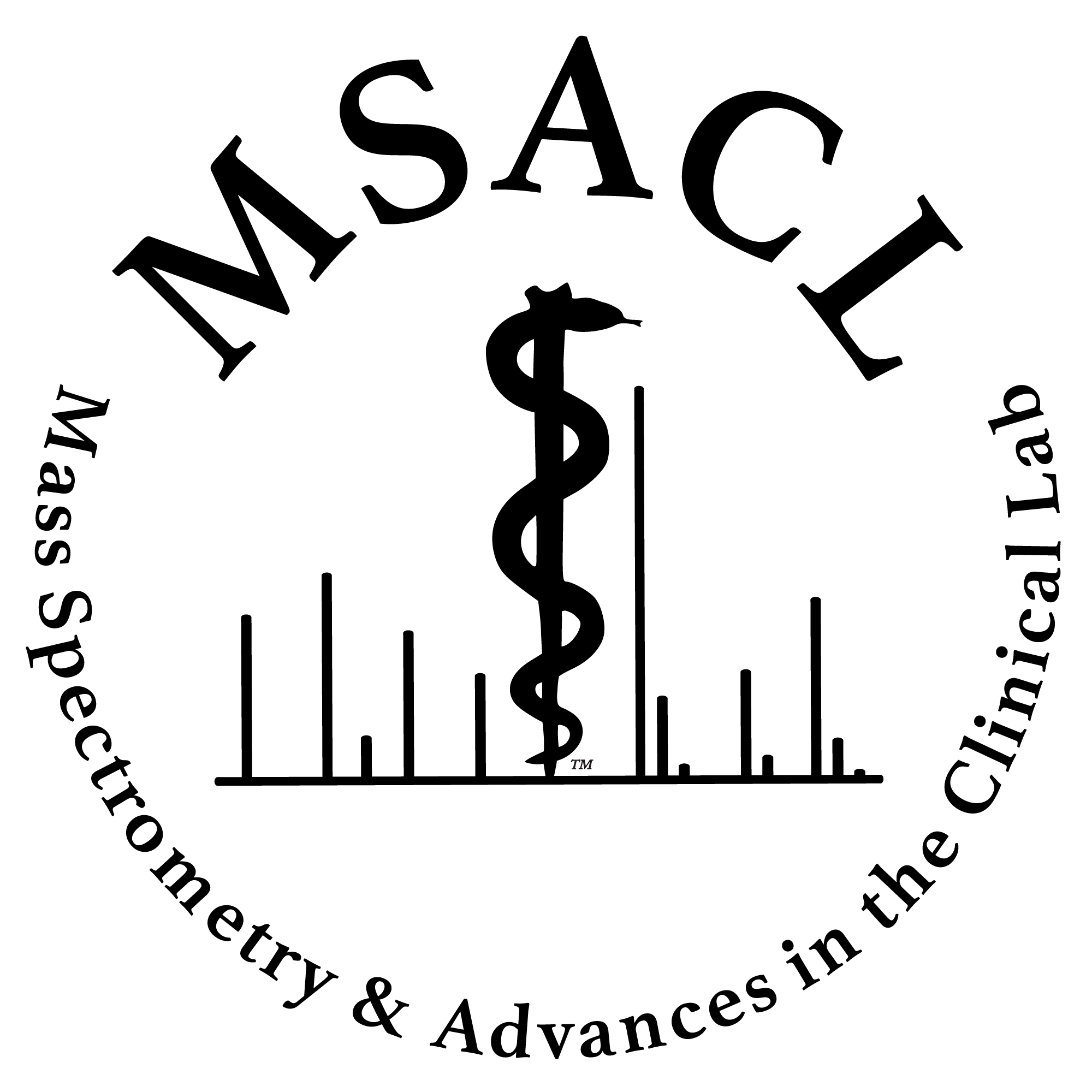MSACL 2022 Abstract
Self-Classified Topic Area(s): Cases in Clinical MS > Metabolomics
|
|
Podium Presentation in De Anza 1 on Thursday at 17:10 (Chair: Allyson Mellinger)
 Serum Bile Acid Profiling by UHPLC-MS/MS Predicts Cholesteric Pruritus Reduction in Maralixibat Treated Patients with Bile Salt Export Pump Deficiency Serum Bile Acid Profiling by UHPLC-MS/MS Predicts Cholesteric Pruritus Reduction in Maralixibat Treated Patients with Bile Salt Export Pump Deficiency
Xueheng Zhao (1), Pamela Vig (2), Cory Kostrub (2), Kenneth DR Setchell (1,3)
(1) Division of Pathology and Laboratory Medicine, Cincinnati Children’s Hospital Medical Center, Cincinnati, OH, USA; (2) Mirum Pharmaceuticals, Foster City, CA, USA; (3) College of Medicine, University of Cincinnati, Cincinnati, OH, USA

|
Kenneth Setchell, PhD (Presenter)
Cincinnati Children’s Hospital Medical Center |
|
Presenter Bio: Kenneth D. Setchell, PhD, joined the tenured faculty of the Department of Pediatrics, University of Cincinnati College of Medicine in 1984, having moved from the Clinical Research Centre of the Medical Research Council, (UK) where he previously held a tenured scientific position. In 1973 he obtained a PhD in steroid biochemistry from the University of London. He was then awarded a fellowship from The Royal Society for post-doctoral studies at the Karolinska Institute in Stockholm, Sweden (1974-1975) in the application of mass spectrometry to clinical and biomedical problems specifically relating to the steroid hormone field. He returned to the United Kingdom to a scientific position in the Division of Clinical Chemistry at the Medical Research Council's Clinical Research Centre where he continued his research in the field of steroids, expanding into cholesterol and bile acid metabolism as it related to gastrointestinal diseases. His parallel research discoveries of the first mammalian lignans later led to the discovery of soy isoflavones in humans, their association with soy intake, and established his research in the area of bioactive plant constituents and human nutrition and disease. |
|
|
|
|
Abstract Background and Aims: Progressive familial intrahepatic cholestasis (PFIC) due to bile salt export pump (BSEP) deficiency is a distressing disease manifest by intractable pruritus, growth delay, and eventually culminating in liver failure. Bile acids have long been implicated in the pathogenesis of pruritus although the exact role they play is unclear. Maralixibat (MRX) is a nonabsorbable apical sodium-dependent bile acid (BA) transport inhibitor that interrupts the enterohepatic circulation of BAs. It was recently FDA approved for the treatment for pediatric cholestasis-associated pruritus because of is ability to reduce the accumulation of circulating and hepatic BAs. Not all patients respond to therapy for reasons that are unclear. We describe a targeted metabolomics approach to explore the association between the bile acid metabolome and cholestatic pruritus and for its potential to predict pruritus reduction in response to MRX treatment.
Methods: Total and individual serum BAs (sBA) including the major sub-species of TCA, TUDCA, TCDCA, TDCA, TLCA, GCA, GUDCA, GCDCA, GDCA, GLCA, CA, UDCA, CDCA, DCA, LCA and 7-hydroxy-4-cholesten-3-one (sterol-C4), a surrogate marker for BA synthesis, were measured using a validated ultraperformance liquid chromatography coupled with tandem mass spectrometry (UHPLC-MS/MS) assay. The internal standards, a cocktail of deuterium labeled standards were added to serum, calibrators and QC samples. sBA were extracted and separated on a Kinetex C18 (2.6 µm, 100 x 3.0 mm) column (Phenomenex, Torrance, CA) with gradient elution. Quantification of individual sBA was achieved by multiple reaction monitoring (MRM) of selected transitions. Total C24 bile acid concentrations were calculated from the sum of individual species. These assays were applied to the analysis of serum from 19 patients with genetically confirmed PFIC due to BSEP deficiency (open-label phase 2 INDIGO trial; NCT02057718) treated with MRX. Changes in the composition of sBA associated with pruritus improvement measured with the Itch Reported Outcome Observer (ItchRO[Obs]) score were monitored at intervals over 72 weeks, with pruritus responders, defined as ≥1 scale reduction, compared with nonresponders. Linear mixed model framework was also used to model longitudinal profiles of sBA and pruritus reduction over time.
Results: Of the 19 patients, 11 met the pruritus-response criteria, which correlated with a reduction from baseline in total sBA that was significantly greater than in nonresponders (p < 0.05) in the longitudinal data. Changes were also observed in the individual BA subspecies. Reductions in glycine and taurine-conjugated cholic acid (TCA) associated with pruritus reduction after MRX treatment and correlated with percentage ItchRO(Obs) score reduction (Pearson correlation coefficient: 0.58, 0.50, 0.53 for TCA, glycocholic acid, and total cholic acid [CA], respectively). A trend towards increased proportion of unconjugated BA in responders (9.84 ± 4.87%) was observed compared with nonresponders (0.61 ± 0.24%, p = 0.09). More importantly, longitudinal sBA profile changes, e.g. GUDCA, GCDCA, TCDCA significantly correlated with pruritus reduction (ꭕ2 =13.35, P<0.001; ꭕ2 =12.86, P<0.001; and ꭕ2 =19.50, P<0.001, respectively). Concomitant increases in serum sterol-C4 were observed in pruritus responders (ꭕ2 =4.70, P<0.05), consistent with the biological action of MRX in blocking the intestinal reabsorption of bile acids.
Conclusion: Targeted analysis of the bile acid metabolome by mass spectrometry revealed significant changes associated with pruritus response to MRX therapy in children with BSEP deficiency and measures of serum sterol-C4 further confirmed efficacy of the drug. These findings offer further interpretation on BA subspecies profile associated with reductions in cholestasis and pruritus, reinforcing data demonstrating that MRX is an effective pharmacological therapy for BSEP deficiency.
|
|
Financial Disclosure
| Description | Y/N | Source |
| Grants | no | |
| Salary | yes | Mirum Pharmaceuticals; Travere |
| Board Member | no | |
| Stock | yes | Asklepion Pharmaceuticals; Aliveris srl |
| Expenses | no | |
| IP Royalty | no | |
| Planning to mention or discuss specific products or technology of the company(ies) listed above: |
yes |
|

